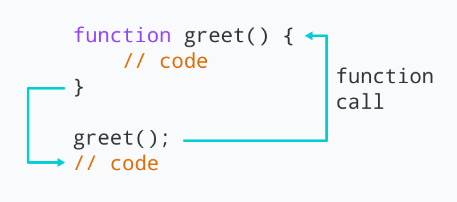
In JavaScript, functions are a fundamental part of the language. They allow you to organize and structure your code, making it more modular and reusable. The ability to call functions is crucial for executing specific blocks of code at desired times. This article serves as a comprehensive guide to JavaScript function calls, covering everything from basic syntax to advanced concepts.
Table of Contents
- Function Call Syntax
- Understanding Arguments and Parameters
- Different Types of Function Calls
- Regular Function Calls
- Method Calls
- Constructor Calls
- Indirect Function Calls
- Function Call Context
- The this Keyword
- Function Call Stack and Execution Context
- Passing Functions as Arguments
- Function Call Errors and Debugging
- Best Practices for Function Calls
- Conclusion
1. Function Call Syntax
To call a JavaScript function, you need to use the function's name followed by parentheses (). If the function requires any arguments, you can pass them within the parentheses. Here's an example of a basic function call:
//Javascript code
myFunction(); // Calling the 'myFunction' function
2. Understanding Arguments and Parameters
Functions in JavaScript can accept parameters, which act as placeholders for values that are passed to the function during the call. These parameters allow you to provide inputs to the function and make it more versatile. Here's an example of a function with parameters:
//Javascript code
function greet(name) {
console.log(`Hello, ${name}!`);
}
greet('John'); // Output: Hello, John!
In the above example, the greet function accepts a parameter called name. During the function call, we pass the value 'John', which gets substituted for the name parameter.
3. Different Types of Function Calls
JavaScript supports various types of function calls, depending on the context in which the function is called. Understanding these types is essential for working with functions effectively.
Regular Function Calls
The most common type of function call is the regular function call. It involves directly invoking a function using its name and parentheses. Here's an example:
//Javascript code
function sayHello() {
console.log('Hello!');
}
sayHello(); // Output: Hello!
Method Calls
In JavaScript, functions can be defined as methods within objects. To call a function that is a method of an object, you use the object's name followed by a dot (.) and the function name. Here's an example:
//Javascript code
const person = {
name: 'John',
greet: function() {
console.log(`Hello, ${this.name}!`);
}
};
person.greet(); // Output: Hello, John!
Constructor Calls
JavaScript allows you to create objects using constructor functions. Constructor functions are called using the new keyword followed by the function name. This pattern is often used to create multiple instances of an object. Here's an example:
//Javascript code
function Person(name) {
this.name = name;
}
const john = new Person('John');
console.log(john.name); // Output: John
Indirect Function Calls
JavaScript also supports indirect function calls using the call() and apply() methods. These methods allow you to specify the context in which a function is executed. Here's an example:
//Javascript code
function greet() {
console.log(`Hello, ${this.name}!`);
}
const person = { name: 'John' };
greet.call(person); // Output: Hello, John!

4. Function Call Context
The context in which a function is called determines the value of the this keyword inside the function. It refers to the object that owns or calls the function. The function's context can vary depending on the type of function call. Understanding function context is crucial for proper function invocation.
5. The this Keyword
The this keyword in JavaScript refers to the object that owns or calls the currently executing function. It allows you to access properties and methods within the function that are part of the calling object. The value of this is determined at runtime based on the function call context.
6. Function Call Stack and Execution Context
When a function is called in JavaScript, it creates an execution context that includes a stack frame. The stack frame keeps track of the function call and its associated variables. Understanding the call stack and execution context is essential for debugging and understanding the flow of execution in your code.
7. Passing Functions as Arguments
JavaScript allows you to pass functions as arguments to other functions. This feature, known as higher-order functions, enables powerful and flexible programming techniques such as callbacks and event handling. Here's an example:
//Javascript code
function calculate(operation, a, b) {
return operation(a, b);
}
function add(x, y) {
return x + y;
}
const result = calculate(add, 3, 4);
console.log(result); // Output: 7
8. Function Call Errors and Debugging
When working with function calls, it's important to be aware of potential errors and how to debug them. Common errors include missing parentheses, undefined variables, and incorrect function contexts. Utilizing debugging techniques such as console logging and step-by-step debugging can help identify and resolve function call issues efficiently.
9. Best Practices for Function Calls
To ensure efficient and maintainable code, it's important to follow best practices when working with function calls. Here are some guidelines to consider:
- Use descriptive function and variable names.
- Avoid global function declarations whenever possible.
- Properly handle function contexts and this references.
- Write reusable functions to promote code modularity.
- Consider performance implications when calling functions within loops or frequently executed code blocks.
Conclusion
In this comprehensive guide, we explored JavaScript function calls, covering various aspects
such as syntax, arguments, types of function calls, context, the this keyword, function
call stack, passing functions as arguments, debugging, and best practices. Understanding how
to effectively call functions in JavaScript is essential for writing efficient and
maintainable code. By applying the concepts discussed in this article, you'll be
well-equipped to utilize function calls to their full potential in your JavaScript projects.
If you enjoyed this piece, we've crafted a related article delving into Python Features. Explore it here.
final thought

by Harsh Verma
final thought

